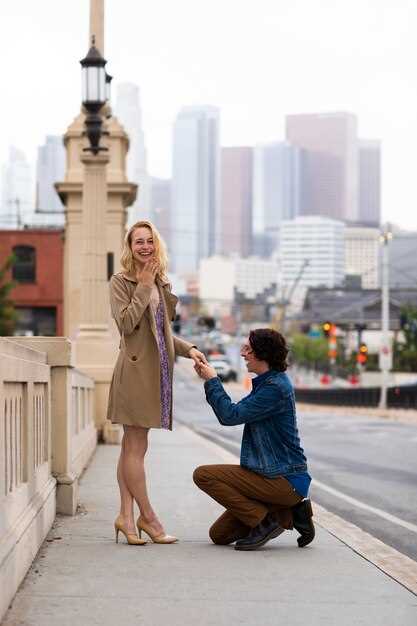
Start with this simple plan: pick three anchors for the day–some street-walk to wake you up, a water view to reset your mood, and a dining stop you’ve wanted to try. This keeps your pace steady and helps you keep focus as you read the city’s tempo from dawn to night.
Surely, we are drawn back by contrasts–noise and generosity, crowds and pockets of calm. The city wakes with traffic and ends with a quiet corner where you can watch water shine on a pier and notice stained-glass light spill across a church doorway on a side street. On a good day, you sense how a single street holds memories, how the subway track carries a story, and how a simple meal can feel better than the last bite.
Yet friction remains. extremely crowded trains test patience. Crowds, price tags, and the constant push to move faster test patience. To move through this, plan ahead: reserve dining seats, choose a few blocks to explore on foot or by bike, and allow time for a Governors Island ferry, where the island air and absence of cars gives your mind a reset. This quick escape keeps your mood even and your visits repeatable.
Three practical moves you can repeat: plan ahead, build micro escapesoraz trust your pace. Pick a fixed dining window, a route that skirts the busiest streets, and a moment when the city’s energy feels most welcome. By reading the city as a living map, you’ll see how grit and grace line up to invite you back again and again, now.
Love-Hate Relationship with New York City
Start with a concrete plan: a four-day, college-style visit that blends purposeful tasks with slow, walking explorations. In the mornings, walk from a library to a museum, then travel between neighborhoods known for design studios and cafés. Pack a grilled snack for the park and keep moving on the next leg, because movement keeps energy and curiosity alive.
To maximize value, map the route by neighborhood and times you want to learn something new. Use Citi Bike for short hops; bikes can cut transit time and give you a tactile feel for streets. A typical walking route between Chelsea and SoHo runs about 2 miles; you can do it in 40–50 minutes if you move with purpose. During those walks, you notice changes in storefronts, stained-glass windows, and the rhythm of neighborhoods; reserve evenings for quiet libraries to decompress.
As a writer and author, you notice how change shows up in storefronts and in the crowds. NYC is a place where whole blocks shift between seasons; some corners feel vacant, others glow with neon. When you are asked about what keeps you coming back, answer with specifics: better access to libraries, more efficient transit, and a sense of history that teaches you to adapt. Then you realize you are spending more time observing than chasing trends, and that clarity travels with you.
That love-hate balance comes down to savoring the stained-glass quiet of early hours and tolerating the stomping of late-night crowds, knowing you’ll return for the next chance to learn, to design, to write, and to move through a city that refuses to sit still. If you want to spend more time learning, allocate fixed times for library visits and reflective walks after dinner, again.
Pacing NYC Days to Avoid Burnout
Plan a 90-minute core outing, followed by a 60-minute rest, to avoid burnout. In NYC, a dynamic block length keeps energy steady and reduces late fatigue, helping you savor details rather than sprint through the day. You could start with a walk through a single neighborhood, then switch to a sit-down food stop or a quick gallery stop to reset. This approach works whether you’re a local or a visitor and scales easily to the york street corridors of Manhattan.
Structure your day into three short blocks: walking, food, and a light cultural stop. Keep total active time under six hours, and cap each block at 90 minutes with at least 20 minutes of space between them so you move without rush and avoid piling fatigue. This rhythm helps you stay present and reduces the pull toward a long, exhausting push. The benefit grew with practice. It works because breaks reset attention and appetite. This rhythm holds space for detours and surely keeps you engaged. Tell them about the approach to keep them motivated.
Example schedule: 9:00–10:30 walking along a tree-lined street near a subway line; 10:30–11:00 coffee and a pastry; 11:00–12:00 visit a small gallery with stained-glass windows; 12:00–13:00 a light food option with vegetables or fish; 13:00–14:00 rest on a park bench; 14:00–15:00 a short stroll to a market or bookstore. If you find crowds, pivot to a quieter segment near york street or a nearby green space to reset. This block emphasizes walking without overdoing it, while the food stop keeps energy steady.
For flavor and balance, choose food that fuels without heaviness. Foods served in small portions can recharge you without dragging you down. Lean proteins, fresh vegetables, and fruit keep energy steady; hydrate often. If you havent tried a mid-day rest in a shaded corner, give it a go–theyre quiet and allow you to reset before the next block. For a local touch, you can try options on orleans street and ask staff about smaller menus that suit pacing.
Resources and planning: commonedgeorg offers curated routes that emphasize pace and rest. If you asked locals for tips, you’ll hear the same message: pace matters. If you havent planned ahead, you might end up chasing momentum through crowded hours. If you didnt know, you can swap a museum visit for a quiet riverside stroll or a library corner.
By syncing movements to energy and keeping a clear exit plan, you can stay curious without burning out. The idea is simple: move, rest, repeat, and allow space for spontaneous discoveries along the way.
Subway Mastery: Minimize Delays and Stress

Always check a live subway status board 15 minutes before you leave and lock in a backup route. Nowadays, service changes appear quickly, so a flexible plan helps you move on time. If the track shows a delay on one line, switch to a nearby track with a similar destination and time window.
Inside the station, position yourself on a platform known to have fewer crowds and to where trains pull in smoothly. Look for vacant spaces near exit stairs to avoid bottlenecks. These micro-decisions cut your stress and add minutes back to your day. A decline in pace is normal, so you adjust by switching to a nearby train and narrowing your focus.
Adjust your belief about delays: they happen, but your response matters. If a car arrives late, you felt the pressure but can become calm by focusing on the next short move–walk to the next interchange, not the far end of the platform. You can resume again on time.
As a writer observing the city, I map how people use these patterns across places and times. Tracking a few predictable shifts–morning crowds, midday dips, evening surges–helps you choose a part of the route that feels smoother rather than stressed. If you havent found a routine yet, pick one consistent path and practice it daily so you’re able to adapt without losing momentum.
Think of your plan as a sandwich of options: the bread is your backup route, the fillings are real-time updates, and the pick is the smoother track you choose when delays rise. This state of readiness stays inside you and improves your mood on the go.
Use quick data from commonedgeorg or similar sources to anticipate planned outages on your usual lines. Save a note on your phone with two go-to options and a backup in case trains are packed. These small contingencies keep your day moving, even if the streets outside look crowded or the train schedule shifts.
By integrating these steps, you gain better predictability, recovering minutes you might have lost and keeping your day on track again.
Smart Budgeting for Shows, Eats, and Sights
Rule: pick one show and build the day around affordable dining and accessible sights. Budget roughly 60-90 for dining, 40-70 for shows, and 15-25 for transit per day. For breakfast, aim 8-15; lunch 12-22; dinner 20-40. NYC offers a huge mix of casual dining, from market stalls to neighborhood diners, so you can tune your plan to your pace. Tourists often feel obliged to hit every marquee venue, but know that these places are best enjoyed with a focused route that saves time and money and keeps the day flexible.
For shows, seek value: matinees or rush tickets can run 20-40; standing-room or lottery options appear around 10-30. Shows held in smaller theatres or on off-peak days can still deliver memorable performances, and you could line up 30 minutes before a late performance for a seat. If you travel with a plan, you could pair a nearby dinner with the show and stay in one neighborhood to reduce time on the side streets and cut extra transit costs. A 7-day transit pass or a pay-per-ride card keeps water and transit costs predictable so you know what you’re spending every evening, and these options can ever save you money while keeping you comfortable.
For eats and sights, balance shopping with free experiences: stroll market-lined blocks, wander which shops match your style, and save room for a bite at a local bakery. The library offers free or low-cost options on certain days, good for a rainy interlude, and these spaces can anchor a light travel day. When a vendor gave a discount, you’ll notice the value on your receipts; pack a water bottle and keep breakfast light so you can linger over a later bite at a street corner. These tweaks give you more time to explore the city’s water-filled sidewalks, late-night eateries, and photo-worthy corners without losing track of your rule. These tips could also stretch their travel budgets.
Hidden Calm: Quiet Spots to Recharge in the City

Start with Greenacre Park for a quick recharge: a compact outdoor oasis where a whispering fountain blocks the noise and a handful of benches invite you to reset. That moment can help you keep your energy for the rest of the day.
When the streets feel loud, these pockets offer a healing pause without pulling you far from your routine. Look for spaces that keep your pace steady, give you space to breathe, and let you test a new location whenever you need a break. The city has changed in how it crowds, but those quiet corners there remain reliable refuges for a few minutes of calm.
- Greenacre Park (Midtown East) – an outdoor pocket that hides a gentle waterfall to drown the surrounding clamor. Benches sit beneath a canopy of trees, and the sound of running water makes it easy to shift your focus from the call of the day. Best time: weekday mornings before 9 a.m. or after 7 p.m.; easily reachable from nearby subway stops, and you can spend 10–15 minutes here to reset and prepare for what comes next. If you tried crowded spots before, you’ll notice the noise decline here and feel more able to focus.
- Central Park Conservatory Garden (Central Park) – a formal, walled space with three terraces, fountains, and carefully pruned hedges that mute noise from busy avenues. Choose a quiet bench or a shaded path, and enjoy a moment of stillness before you rejoin the crowd. Best time: early mornings on weekdays or late afternoons after 5 p.m.; it tends to be calmer than other parts of the park, so you can look up, breathe, and reset. This helps if you hate hustle, because you can spend a few minutes here and return ready to go.
- Stuyvesant Cove Park (East River, Manhattan) – a slim, wind-swept waterfront park that feels tucked away from the traffic. The seating faces the water, and you notice a decline in noise as you step closer to the river. Time here: 15–20 minutes works well, especially after work or during lunch breaks when the streets calm down. You might prefer this location if you want a quick reset without leaving downtown.
- Carl Schurz Park (Upper East Side) – a quiet riverside oasis near Gracie Mansion with a long promenade and tucked-away benches. The birds, the water, and the hedge-lined nooks create a sense of space you won’t find on crowded sidewalks. Best moment: late afternoons on weekdays; mornings are peaceful too, if you’re early enough to beat the families and joggers. If you want a longer break, you can spend 20–30 minutes strolling the riverfront and still feel detached from the noise.
- Fort Tryon Park (Washington Heights) – head uptown for a change of pace and a real sense of space. The Heather Garden blooms in spring and fall, and hillside paths offer expansive views of the Hudson. It’s extremely calm on weekdays and in the early morning; budget 20–40 minutes to walk, sit, and enjoy the quiet air. Changing scenery here helps you return with a fresh perspective, ready to tackle the next task.
- Four Freedoms Park (Roosevelt Island) – a minimalist, water-fringed setting with long river views and a sparse crowd. It’s a calm call to pause whenever you need a break from the skyline. Take the tram or a short ride on the subway to reach Roosevelt Island, then stroll the promenade and find a bench where you can collect your thoughts and return to your day with more focus. This location is ideal when you want to feel far from the bustle without going far.
Whenever you need a reset, these spaces offer a straightforward way to protect your time and your energy. If you spend a few minutes there, the noise on the streets might ease, the change of location might do wonders, and you’ll be ready to meet the next call with more clarity. For those moments you want to keep, plan a brief italy moment in a courtyard with olive trees or terracotta pots, then you’ll feel the city breathe with you. Those little pauses can eventually become a reliable habit that makes the day more manageable, even on days when you dislike crowds.
Seasonal Timing: Navigating Weather, Crowds, and Events
Plan your NYC visit for late May or early September to balance weather and crowds.
honestly, this seasonal timing makes a half hour walk through quiet streets feel calmer, while shows in midtown stay lively and accessible. theres plenty of options to explore across americas cities simultaneously, and you can shape your days around comfortable light and the places you want to visit.
Weather shifts and crowds vary by season: Spring 55–70 F with occasional showers; Summer can push into the 80s with humidity; Fall settles around 60–70 F with comfortable evenings; Winter drops to 30–45 F with windy days. Crowds spike around events like Fashion Week (February and September), Thanksgiving, and Christmas. theres plenty of diverse food scenes across americas cities simultaneously, and NYC offers quiet corners where you can regroup after busy blocks. If you want quieter days, target weekday mornings in winter or late fall when theres fewer crowds and more breathing room. After decades of visiting, you learn to pick times that fit your plan, and some hotspots gone quiet midweek can surprise you. You can take advantage of this pattern even after decades of visiting. For a quick recharge, theres a nearby drug store for water or medicines before you resume walking.
Walk smarter: mix indoors with outdoor strolls, plan a core route that links your places and favorite cafes. If you think about neighborhoods, you can cover a lot by pairing a Midtown segment with a riverfront walk or a quiet park. At midday, grab orleans fries from a cart for a quick energy boost; in the evening, shows inside venues nearby add a splash of style. Certain hours, like early mornings, deliver the best light and fewer crowds, while evenings bring live shows and street style shots in areas surrounding the park and river. Think of it as a rhythm you can live with, adjusting as needed to weather, crowds, and energy.
| Season | Typical Weather | Crowds & Events | Practical Tips |
|---|---|---|---|
| Spring | 55–70 F, light rain | Moderate crowds; museum openings; rooftop venues reopen | Book matinee shows, pack a compact umbrella, mix indoor/outdoor routes |
| Summer | 75–90 F, high humidity | Peak crowds; parades and outdoor concerts | Plan early starts, seek shade, hydrate, and grab fries or a snack mid-tour |
| Fall | 60–70 F, crisp evenings | Steady crowds; fashion events; shopping spikes | Reserve Broadway shows early; use off-peak windows for parks |
| Winter | 30–45 F, wind chill | Fewer crowds; holiday windows, NYE | Dress in layers; visit indoor venues; mornings are quiet |
